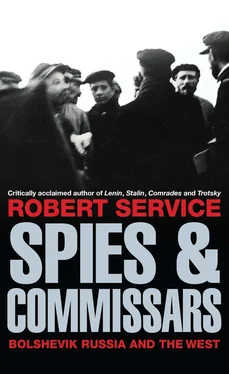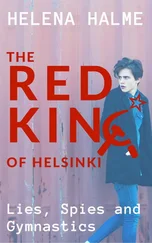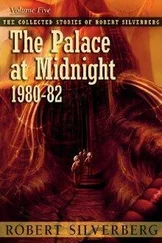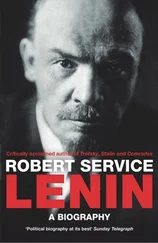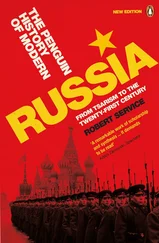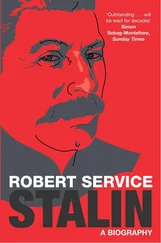Some Russians nonetheless dreamed that the scope for profit-making might eventually benefit Russia. For them, the New Economic Policy was a first and very desirable breach in the wall of doctrinaire communism. They hoped that the remaining restrictions on the operation of a private market economy would eventually be removed. They were carried away in their speculation. Perhaps the Bolshevik party was undergoing a permanent internal change, dropping its fanatical ideology for a more realistic appreciation of what could be accomplished. In Harbin, across the Siberian frontier in Manchuria, émigré Russian intellectuals became convinced that the Bolsheviks were turning into nationalists. And it is true that Bolshevism as it emerged from the Civil War was committed to gathering back the lands of the Russian Empire under central control. The Bolsheviks unquestionably wanted Russia to be a great military power once more. They also wanted to create an advanced industrial society and spread universal education. They were the most ambitious modernizers the country had known since Peter the Great. Some people regarded them, beneath their red banners, as national champions who were capable of succeeding where tsars, conservatives, liberals and socialists had failed.
Undoubtedly there were leanings in this direction in the Bolshevik leadership, and the émigrés in Harbin were right that the Soviet state was far from being immune to pressures to move away from its violent, oppressive zealotry. Ex-Ambassador Vasili Maklakov in Paris agreed. He could not see how the Bolsheviks could survive without making allowance for the nationally minded elements in the Red Army that had enabled victory in the Civil War. 19In Russia too it was murmured that the October Revolution was gradually being ‘straightened out’ and ‘moderated’ and ‘civilized’. Across the professions there were people who welcomed communism’s modernizing zeal for Russia without being communists. Teachers felt free to experiment with fresh pedagogical ideas. Economists were attracted by opportunities to plan and regulate production and supply. Scientists welcomed the promise of abundant resources as and when they became available. It was common knowledge that Soviet Russia was a ruthless police state that boasted of its ruthlessness. Russian émigré and Western optimists took Lloyd George’s line, believing that it was better to shake hands and do business with Lenin and Trotsky than to face them across military fronts.
The German government had reasons of its own to go further than Lloyd George when the European powers met in Genoa in April 1922 to settle Europe’s outstanding international questions. Chicherin attended instead of Lenin, who was thought likely to be assassinated. Trotsky stayed away for the same reason. The Soviet delegation got nowhere with the Western Allies because France refused to deal with Russia until such time as it recognized its obligations to those whose property and investments had been seized by Sovnarkom. The Russians and Germans drew the obvious conclusion: they were both pariah states. Having found plenty of points of mutual advantage, they travelled further down the Italian coast to Santa Margherita and Rapallo where the discussions were fast and fruitful; and a treaty was signed that gave full diplomatic recognition to Russia and opened avenues to the import and export business. Sovnarkom saw its chance to entice German companies to sign big commercial contracts. Secret arrangements were also made for the Germans to evade the military restrictions imposed by the treaty of Versailles by organizing and training their armed forces on Soviet soil, where the Red Army would benefit by seeing and copying up-to-date techniques.
The Bolsheviks had vanquished their enemies at home and begun to neutralize the threats from abroad, and Lenin’s firm leadership had been crucial to the survival of the Soviet order. The economy was recovering and society was beginning to recuperate from years of war and disruption. But in January 1924 Lenin died and in the ensuing power struggle it was Stalin who emerged victorious. In his own rough way he introduced radical changes, beginning with a programme of economic deprivatization. Forced-rate industrialization was instigated. State ownership, state regulation and state planning were spread to every corner of production and distribution. The old ‘specialists’ were replaced by newly trained and promoted Red operatives. The few outlets for cultural criticism were abolished. Compromise with the national aspirations of the many non-Russian peoples of the USSR was ended. Open-ended educational initiatives were replaced by rote learning. Factional dissent was banished from the party not just by decree but also in practice. Trials were organized of prominent figures thought likely to obstruct or undermine Stalin’s programme and the penal network of labour camps sucked in victims who never numbered fewer than a million. The Cheka, which was subsumed in the People’s Commissariat of Internal Affairs (or NKVD), acquired at least the same importance as the Bolshevik party.
This not only took the world by surprise — it was also widely thought to be an internal phenomenon, safely quarantined from other countries. Yet Soviet foreign policy had not lost its potential to destabilize politics in Europe. As ex-Ambassador Boris Bakhmetev observed, Bolshevism ultimately had to expand westwards or risk withering away. Militarism was inherent in its situation whether it liked it or not. 20The Kremlin’s rulers needed foreign revolutions for their own security since the treaties with capitalist governments could bring only temporary relief — and the possibility of an anti-Soviet crusade was a permanent one. The Bolsheviks were anyway convinced that global capitalism was vulnerable to profound inner instabilities, inevitably leading to world wars and economic depression that would offer opportunities for communist political expansion. Comintern continued to send agents, advice and finance around the globe. Under its guidance dozens of new communist parties promoted the cause of socialist revolution. There had been another, equally disastrous attempt at insurrection in Germany in 1923. Apart from an initial objection by Stalin, it had been supported by the entire Politburo. There were also attempts at urban risings in Estonia and Bulgaria. Despite such disappointments, the communist leaders in Moscow did not give up hope of foreign revolutions — and Germany remained the great target.
Publicly they continued to pretend that the German Communist Party would have to make revolution without external assistance. This was just as misleading as the notion that the Comintern was independent of Moscow. Behind closed doors the Soviet leadership accepted that they would have to send in the Red Army to support any German revolution that might break out. The Western Allies would never tolerate the existence of a communist state in the heart of Europe and would oppose any attempt to contravene the treaty of Versailles. There was unlikely to be a ‘European socialist revolution’ without yet another great European war. 21Revolution in Berlin would be the first step towards a continental bloodbath. Bolshevik leaders thought this a price worth paying in the Marxist revolutionary cause. Small wonder that the peoples of eastern and east-central Europe refused to take a casual approach to the possibility that communism might soon be on the march again. Owners of businesses worried for their property; priests and their congregations fretted that spiritual freedom might be crushed. Millions of people yearned simply for peace. The Bolsheviks had no intention of giving them rest.
So a first Cold War took place between the USSR and the Allies even before 1945. Obviously the Iron Curtain that Ethel Snowden had in mind in 1920 was not the same as the one that stretched down the middle of Europe after 1945. What she mainly meant was Russia’s isolation from the world rather than a political, ideological and military stand-off between two global military and political coalitions. Yet the potential for the first Cold War to turn into an even bigger and more dangerous one was already present — and it became a reality when the Soviet Union became a great power by dint of the country’s industrialization in the 1930s and its victory on the eastern front against the Third Reich in 1944–5.
Читать дальше
